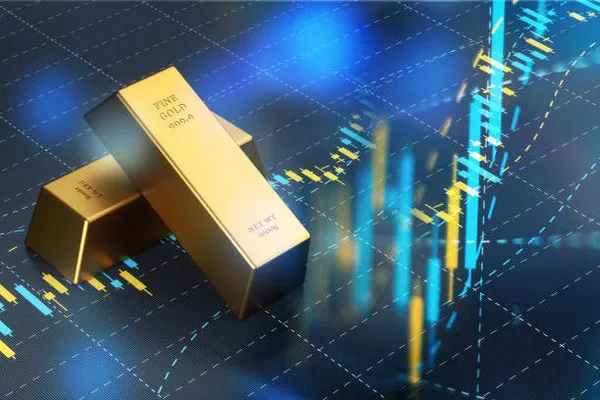Gold has long been considered a safe haven asset, prized for its ability to maintain value over time and provide a hedge against inflation and economic instability. However, trading and investing in gold require a thorough understanding of various indicators that can influence its price. This article explores the best indicators for gold, helping investors and traders make informed decisions in the dynamic world of precious metals.
The Nature of Gold as an Asset
Before delving into the specific indicators, it’s crucial to understand the intrinsic characteristics of gold. Unlike stocks or bonds, gold does not yield dividends or interest. Its value is primarily derived from its scarcity, durability, and historical significance as a store of value. Additionally, gold’s price is influenced by various macroeconomic factors, geopolitical events, and market sentiment.
Key Indicators for Gold
Economic Indicators
Economic indicators are statistics about economic activities and performance. Several economic indicators can provide insights into gold price movements:
Inflation Rates: Gold is often seen as a hedge against inflation. When inflation rates rise, the purchasing power of currency declines, prompting investors to flock to gold, thereby increasing its price.
Interest Rates: There is an inverse relationship between interest rates and gold prices. When interest rates rise, the opportunity cost of holding non-yielding assets like gold increases, leading to lower gold prices. Conversely, lower interest rates make gold more attractive.
GDP Growth: Economic growth indicators such as GDP can affect gold prices. In times of economic uncertainty or recession, gold tends to perform better as investors seek safe-haven assets.
Geopolitical Events
Gold often reacts to geopolitical events, such as wars, elections, or major policy changes. These events can create uncertainty and volatility in financial markets, driving investors toward gold.
Currency Movements
The price of gold is often inversely related to the strength of the US dollar. Since gold is priced in dollars globally, a stronger dollar makes gold more expensive for holders of other currencies, reducing demand. Conversely, a weaker dollar makes gold cheaper and boosts demand.
Market Sentiment and Speculation
Market sentiment and speculative activities significantly impact gold prices. Traders’ perceptions of future economic conditions, inflation expectations, and central bank policies can drive short-term price movements.
Technical Indicators
Technical analysis involves studying price charts and patterns to forecast future movements. Several technical indicators are particularly useful for gold:
Moving Averages: Moving averages, such as the 50-day and 200-day moving averages, help identify trends and potential reversal points. When the short-term moving average crosses above the long-term moving average (a “golden cross”), it signals a potential bullish trend. Conversely, a “death cross” indicates a bearish trend.
Relative Strength Index (RSI): RSI measures the magnitude of recent price changes to evaluate overbought or oversold conditions. An RSI above 70 suggests gold may be overbought, while an RSI below 30 indicates it may be oversold.
Bollinger Bands: These bands measure volatility and identify potential buy and sell points. When gold prices touch or break through the upper Bollinger Band, it may signal overbought conditions, while touching or breaking through the lower band may indicate oversold conditions.
MACD (Moving Average Convergence Divergence): MACD is a momentum indicator that shows the relationship between two moving averages. A bullish signal occurs when the MACD line crosses above the signal line, while a bearish signal occurs when it crosses below.
Combining Indicators for Better Insights
Relying on a single indicator can be risky. Instead, combining multiple indicators can provide a more comprehensive view of the gold market. For instance, integrating economic indicators with technical analysis can help confirm trends and potential reversal points.
Case Study: Gold Price Movements in Recent Years
To illustrate how these indicators work in practice, let’s examine the gold price movements over the past few years.
COVID-19 Pandemic (2020): During the initial outbreak of COVID-19, gold prices surged as investors sought safe-haven assets amid global uncertainty. Economic indicators such as rising unemployment rates and declining GDP growth contributed to this trend. Technical indicators, including moving averages and RSI, confirmed the bullish trend.
US Federal Reserve Policy (2021-2022): The Federal Reserve’s decisions on interest rates had a significant impact on gold prices. When the Fed hinted at raising interest rates to combat inflation, gold prices faced downward pressure. Technical indicators such as the MACD provided early signals of this trend change.
GeopoliticalTensions (2023): Rising geopolitical tensions, such as conflicts in Eastern Europe, led to increased demand for gold as a safe-haven asset. The interplay of economic indicators (inflation, interest rates) and market sentiment (fear of instability) drove this trend. Technical analysis, including Bollinger Bands, highlighted the heightened volatility during these periods.
Practical Tips for Investors
Stay Informed: Regularly monitor economic indicators, geopolitical events, and market sentiment to stay ahead of potential gold price movements.
Diversify Indicators: Use a combination of economic, technical, and sentiment indicators to get a well-rounded view of the market.
Risk Management: Always implement risk management strategies, such as stop-loss orders, to protect against adverse price movements.
Long-term Perspective: While short-term indicators are useful, maintaining a long-term perspective can help navigate through market volatility and focus on the overall trend.
See Also The Current Spot Gold Price
Conclusion
Determining the best indicator for gold is not straightforward, as various factors influence its price. A comprehensive approach that combines economic indicators, geopolitical analysis, currency movements, market sentiment, and technical analysis provides the best insights for making informed decisions. By understanding and integrating these indicators, investors and traders can better navigate the complexities of the gold market and capitalize on opportunities.
Ultimately, the best indicator for gold depends on the investor’s goals, risk tolerance, and investment horizon. Staying informed and flexible in the approach ensures that one can adapt to changing market conditions and optimize investment outcomes in the precious metal market.


